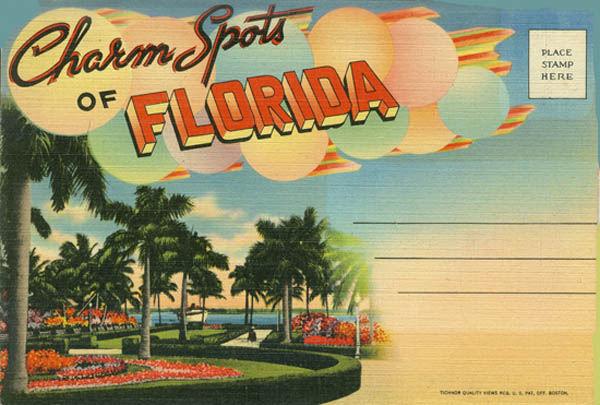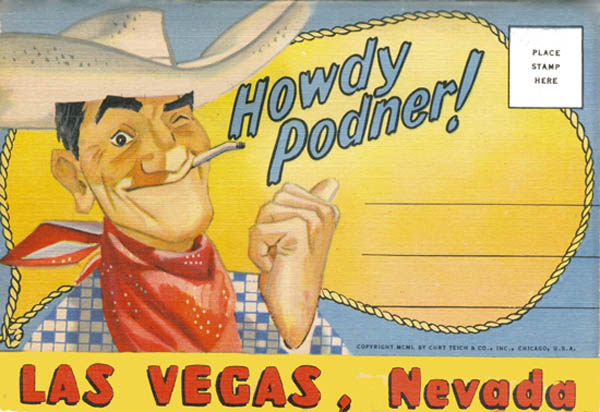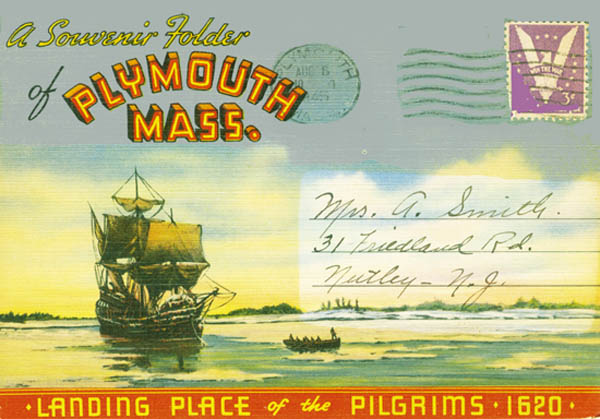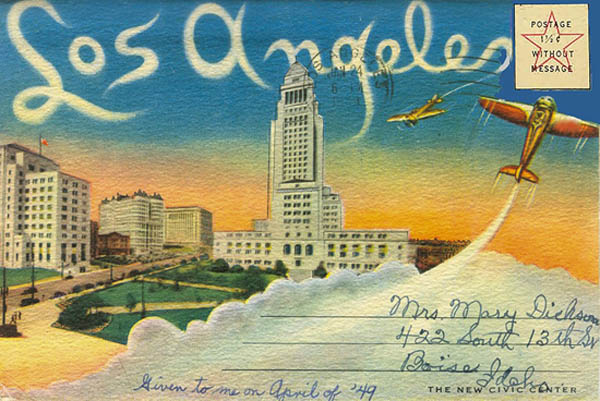On Vacation: Travel Postcard Folios
Smack Dab In The Middle: Design Trends Of The Mid-20th Century
By Donald-Brian Johnson - September 01, 2023
Having wonderful time, wish you were here! Its short. Its sweet. Its the perfect picture postcard message. Postcards have been sending us their brief messages since the mid-1800s. The first is often credited to English writer Theodore Cook in 1840; he sent one to himself. Souvenir postcards, showing spots where youd like to be if only you had the time and money, made an 1871 debut in Vienna. Sales really took off in 1893 with the introduction of picture postcards at the Chicago Worlds Fair. Soon, sending the folks back home a postcard became a rite of travel. Why waste vacation time writing letters? An eye-pleasing illustration on one side of a card, with a few cheery words penned on the other, got the point across. If a picture is worth a thousand words, picture postcards were the living proof. And if one picture was good, a whole batch was even better. Enter the travel postcard folios. Postcard folios (accordion folders) were 6-by-4.5-inch booklets. The cardboard cover opened to reveal views of the featured attraction. Visiting Silver Springs, Florida? Well, here are shots of a bevy of mermaids frolicking underwater. Guides feeding monkeys, and milking rattlesnakes, and a merry crowd aboard a glass-bottom boat, there is a travel postcard with them. The back cover interior gave a breathless preview of what awaited travelers at Natures Underwater Playground: shell mountains, with their faces dipped in snow, rainbow colors, iridescence at its best, a jungle cruise one will never forget. With fancier folders, the interior pix were all in color, on both sides of sturdy, postcard-size stock. The pages were horizontally joined to each other, which meant when the booklet was opened, they tumbled out, accordion-style. Folder exteriors were generally equipped with a tuck-in flap to keep things contained. The flap interior included a few blank lines for that all-important message to the gang back home. When the flap was opened, the complete exterior picture was repeated beneath it, so not a bit of scenic wonder was missing. The cover reverse featured a different illustration, usually paired with address lines and a stamp box. Originally retailing for about a quarter, with mid-century postage averaging 3 cents, travel card folios were a luxury every pocketbook could afford. The first U.S. postcard folios, copyrighted in 1897, were produced by the Wirth Brothers. Many Wirth cards featured black-and-white visuals of notable events of the day, such as the Spanish-American War. The folios most prized by todays collectors, however, arrived some years later. Those first came courtesy of Chicagos Curt Teich & Co., which began churning out cards in the early 1930s. Teich popularized linen postcards. While not actually made of linen, the mix of fabric and wood pulp in the card stock gave that appearance, especially after a linen-like texturing was added. Linen cards looked expensive but were actually more-cost efficient to produce. Teich believed in brightly-colored visuals, and heavy retouching often resulted in photos that look more like paintings. Teich also pioneered the big letter (aka large letter) cover design so identified with travel postcard folios. The name of the locale is outlined in huge block letters. Inside each letter are small photos offering a tantalizing glimpse of what the attraction has to offer. If youre looking for a collecting hobby that doesnt leave you empty-pocketed, postcard folios send just the right message. Hundreds are offered online, and the majority sell at $5-$10 dollars each. As with all paper goods, condition is important. These were intended for mailing; if they were, the results were often mashed edges and rubbed exterior visuals. You may also prefer a folder free of stamps, postmarks, and scrawled addresses (although these often add to the vintage charm). Pristine examples remain readily available. These were originally purchased as mementos, rather than for mailing. Wherever your destination, postcard folders can start you on your journey. So get going, the world awaits! Photo Associate: Hank Kuhlmann Photos by Donald-Brian Johnson. Donald-Brian Johnson is the co-author of numerous books on design and collectibles, including Postwar Pop, a collection of his columns. Please address inquiries to: donaldbrian@msn.com.













SHARE
PRINT